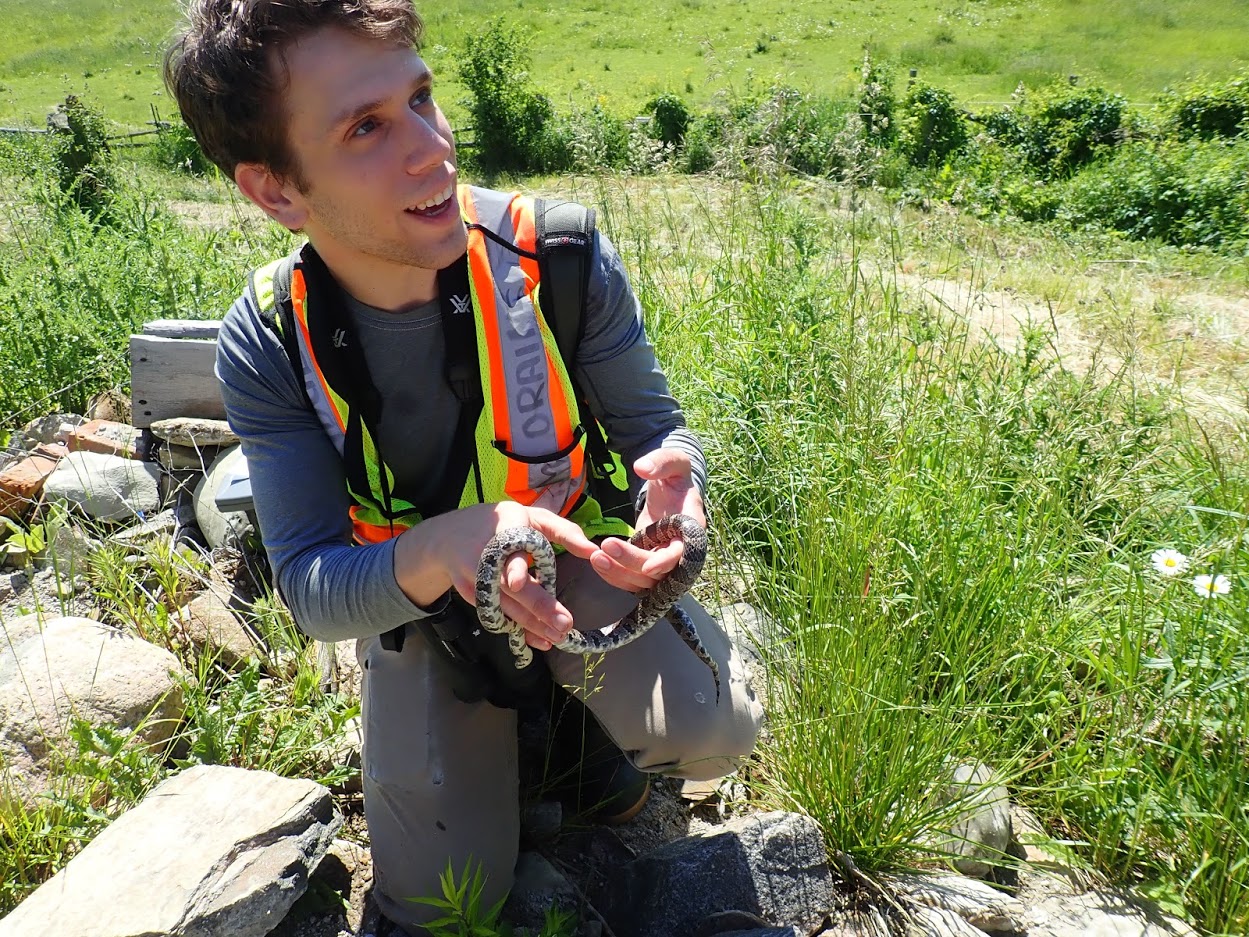Many of you may be wondering what it is like to work as a part of the OTCC field team, out of general interest or due to aspirations of one day working on a similar project. If I were to try and explain every aspect of what is involved in our work I fear I would lose most of you about halfway through, instead I will take you through a typical day in the field.
The morning starts with the chorus of resident songbirds excitedly welcoming the new day. Once the gear is gathered we have a short drive to the study area from the cabin we stay at during the work week. Once in the study area we have to canoe to one of four main sites where the turtles are located, typically two sites are visited in one day as we split off into pairs. The two further sites take approximately 40 minutes to reach by canoe. Two of the sites involve walking between wetlands that the tracked turtles currently occupy, this sometimes involves several kilometres of hiking between wetlands. The other two sites are traversed primarily by canoeing through channels that weave through dense patches of wetland shrubs and grass hummocks. As the summer progresses and water levels drop we have needed to become increasingly creative in navigating the narrowing channels.
Once the site is reached it is now time for the bread and butter of our work, tracking the turtles. The tracking is conducted through the use of an antenna attached to a receiver that converts signals emitted by the transmitter on the turtle into beeps that increase in volume the closer you are to the turtle. We must first determine the general direction of the turtle and if there are multiple turtles at that location, which one is closest. Once the order of tracking is determined we move as close as possible to the general location of the closest signal. From there we exit the canoe and use the receiver to locate the turtle by making wide sweeping arcs with the antenna and following the path of the loudest beep. This is not as easy as it might seem as vegetation, rocks and the water itself can muffle, refract or divert the transmitter’s signal. Oftentimes the turtle will slip by you in the process as they can be incredibly stealthy and know their environment extremely well.
Once you finally catch that beautiful smirking turtle with a chin that rivals the surrounding yellow pond lilies’ vibrancy, it’s time to process it. This involves measuring carapace length, plastron length, height and weight, as well as recording any injuries present. Location and habitat information are recorded and the turtle is sent on its way, often offering a look of disapproval before disappearing back into the tea-stained waters that conceal them so well.

Blanding’s turtle. Photo by Tyler Ambeau.
After all the tracked Blanding’s turtles at the site have been found we often have time to search for other turtles, such as the Eastern musk turtle aka stinkpot below. Oftentimes these turtles are found when we are still tracking our study turtles. This gives us the opportunity to collect data on other turtle species present as well as the possibility of adding another Blanding’s turtle to our study if it happens to be a juvenile.

Eastern musk turtle. Photo by Tyler Ambeau.
At the end of the day we paddle back to the car and return to the cabin for the night, preparing what is needed for the next day and inputting the data collected into the database. As we fall asleep exhausted from a full day of hiking and canoeing, we listen to the melody of the whip-poor-wills calling in the night.
What makes this job so enjoyable is not only the rewarding feeling of contributing to the knowledge of a species at risk but also the environment in which we work. There is nothing better than walking through amazing habitat and observing thriving flora and fauna.

White water lily. Photo by Tyler Ambeau.

Chestnut-sided warbler. Photo by Tyler Ambeau.

Five-lined skink. Photo by Tyler Ambeau.
If you are like me and enjoy nothing more than the opportunity to get outside I strongly recommend that you choose a career path that allows you to be in nature as much as possible. Even if that means you have to change the career path that you are currently on, I did it, and it’s the best decision I have ever made.







